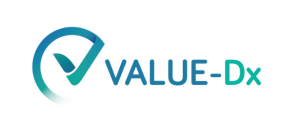Antimicrobial resistance (AMR) poses a significant global health threat, exacerbated by the irrational use of antibiotics, particularly in the treatment of respiratory tract infections in community care. Rapid Point-of-Care Tests (POCTs) can help mitigate overuse, but their adoption remains limited in most European countries. This VALUE-Dx paper explores the barriers and facilitators within health technology assessment (HTA), pricing, and funding policies that impact the use of POCTs for acute respiratory tract infections in outpatient practices.
Results
Expert interviews were conducted with representatives from five European countries: Austria, Estonia, France, Poland, and Sweden. The interviews provided comprehensive insights into HTA, funding, and pricing policies in the peri-launch phase. Barriers identified included a lack of evidence for diagnostics, limited transferability methods from medicines to diagnostics, and the absence of price regulation for studied diagnostics. Weak purchasing power due to regional procurement processes was also noted as a pricing-related obstacle. On the funding front, the coverage (reimbursement) of diagnostic tests and optimized remuneration for physicians were recognized as facilitators.
Conclusion
Diverse barriers and facilitators in the peri-launch phase for POCT uptake were identified, largely influenced by the country context and healthcare system. While the complex HTA process posed challenges, it wasn’t a barrier to POCT use in most countries.Free pricing was prevalent in all investigated countries, with substantial differences in funding for POCT application. Optimizing funding emerged as a key factor in increasing POCT uptake. Policymakers need to recognize that the non-adoption of peri-launch policies can impose long-term costs on the healthcare system and leave untapped potentials in pricing and funding. Measures against AMR should be integrated, acknowledging the interaction and impact of different policies. The implementation of national action plans against AMR can indirectly influence POCT uptake by addressing barriers related to funding.


